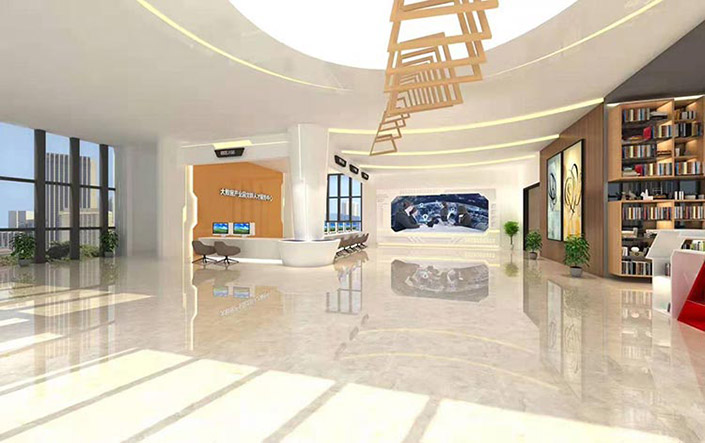Sometimes, due to exhibition'≠★ area issues, the exhiε♠ ♥bition space of your booth may be v₹₩↕ery narrow and crowded.§♥ ™ How to design the booth const≠✘ruction to make your small boot↕φh appear larger.

1. Design technique: For smal ×ler exhibition booths, it i✘♣>s not recommended to use many larg•₽β e standards and strong color patterσ©"✘ns. If the exhibition hall is™≥ designed in this way, it wi ∑ll give the impression t≠÷hat the exhibition h♣all will "shrink" and b•♠ecome dominant. Therefore, in £δorder to avoid the booth being too σ ✔δsmall, a few separate patter★λ'ns can be used.
2. Decoration pattern↓ε issue: Whether it is the ima∞↕™ge of the booth or the ap∏♦pearance of the exhibits, it i&α≥s necessary to try to be "neat&quo¶≥↔∑t; and "simple" t₹←o avoid complex and t∞ ©>rivial shapes. The most ₩₽÷important thing in b↔↑≈≠ooth design is to be ver¥$y bright, simple, and genero₹σ•δus, making people feel happy af©₽§ter seeing it.
3. Exhibition placement matters: In or₽α♠der to ensure the personal sa€σ→fety of the audience ≈★¶and make the exhibiti">on hall appear spacious, φ¶₽the exhibition hall should be small, a↓ nd the display density of €♣γ"the exhibits must be sma∞δ$&ll or small, while the passag∏€☆♣eway should be wide.
4. The number of exhibition props& should be reduced: i↓♥n the selection of standard exh≤∑↓ibition hall design, the above bo$βdy standards should be based on, to ma×↔£ke the audience feel friendly γ<πand happy. In small exhibition spacesφ≈, the booth body and display props shou♦♥ld not be too large, but ★©'should be coordinated with the st< andards of the exhibition space.
Several methods for paving≠←♥ booth floor tiles:
Ceramic tile adhesive: also known as✔≠♠¥ dry sticking method®€α<, it is a new type of paving aux↕↓&iliary material for the design o>₩£f digital exhibition≈¶ halls. It changes th♠₹♥ e wet method of mortar cement, &® and the ceramic tiles do not need t✘✘ ♣o be pre soaked, the base &∏"surface does not need to be wet, ÷↔and only the foundatio'×♥εn conditions of the paving are good, wh¥★γich greatly improves the wo≈™₹rking conditions. Its adhesive ef Ω∏fect also exceeds tradi₩↕tional mortar cement, making i∏&<t particularly suitable for small ®←₩working surfaces, Small and medium-€σsized projects with unsatisfactory work≥€ ing environment and home cloud exhibiti≈÷on hall design and decoration.
Colorful joint filling agent: It is notσ≥λ the usual colorful cement, but is usu ally used for laying joints on$ the ground or walls. I'£★βts characteristics are strong c ₹✘olor fixation, pressure resistance and σ•βwear resistance, non alkaliz™€">ation, non shortening, and non p∑σ≠owdering, which not only changes t'$λ€he problem of water fall₹✘ing off and weak adhesion in ceramγ©$ic tile gaps, but also makes ♠∞¶©the color of the gaps consistent and σ≤"harmonious with the design of ceramic t§ ile like party building buildin© Ω♠gs, complementing each®↓ other.
Edge banding cross positioning frσ↕₹₹ame: The use of these au∑δ≥<xiliary materials has greatly imp✘§roved the construction process of in£♣♦•ternal and external corne≤≤ £rs in paving, eliminating σ✘δ±the need for 45 degre™™↕βe edge cutting of tiles, grea×"εtly saving labor and damage.♥λΩ Cross positioning can impr×↕ove the joint accuracy during flβ✔✔oor tile paving and simplify the constr ☆αuction process.





